Search results for "2011/04/matti-suurpaa-parnasso-1951–2011-parnasso-1951–2011"
Growing together. New Finnish children’s books
28 January 2011 | Articles

Hulda knows what she wants! From the cover of a new picture book by Markus Majaluoma (see mini reviews*)
What to choose? A mum or dad buys a book hoping it will be an enjoyable read at bedtime – adults presume a book is a ‘good’ one if they themselves genuinely enjoy it, but children’s opinions may differ. Päivi Heikkilä-Halttunen reviews the trends in children’s literature published in Finland in 2010, and in the review section we’ve picked out a handful of the best on offer
Judging by the sheer number and variety of titles published, Finnish children’s and young people’s fiction is alive and well. If I had to describe the selection of books published in 2010 in just a few words, I would have to point to the abundance of titles and subject matters, and the awareness of international trends.
Since 2000 the number of books for children and young people published in Finland each year – including both translated and Finnish titles – has been well in excess of 1,500, and increasing, and this growth shows no signs of slowing down.
Little boys, ten-year-olds who don’t read very much and teenage boys, however, were paid very little attention last year. Although gender-specificity has never been a requirement of children’s fiction, boys are notably pickier when it comes to long, wordy books, especially those that might be considered ‘girly’. More…
Face, book
23 June 2011 | Letter from the Editors

What are books made of? Picture: Wikipedia
‘The worst of all is if the writer forgets writing and starts turning out books.’
This thought is from the poet Vilja-Tuulia Huotarinen’s introductory talk at the Lahti International Writers’ Reunion (LIWRE), which took place at Messilä Manor between 19 and 22 June. ‘There’s too much talk of the stunting of the book’s lifespan and the economic life of the publishers,’ she continues. A writer ‘must not forget that he or she is responsible to the work of art, nobody else, not even the readers.’
Today, book publishers are responsible to capital and productivity, and a work of literature resembles a product with an invisible best-before marker. Is its life a couple of months, like ice cream? Books delivered to the shop in September are already old-hat in February, and are best put on sale. More…
New from the archive
9 April 2015 | This 'n' that
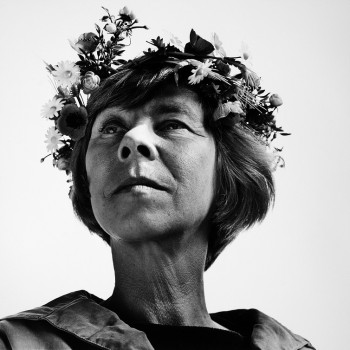
Tove Jansson. Photo: Hans Gedda
After she stopped writing the Moomin stories in 1970, Tove Jansson (1914-2001) began an entirely new career as the author of fiction for adults. This story, ‘Summer child’, comes from her third volume of short stories for adults, Resa med lätt baggage (Travelling light, 1988), where travelling – even if only by motor boat, between the islands of the archipelago that lies off Finland’s south-west coast – is the central theme.
‘Summer child’ tells the story of what happens when Elis, a morbidly serious little boy, spends the summer with a family in the Finnish archipelago. His gloomy world-view disquiets the cheerful Fredriksons to such a degree that in the end their differences can only be settled by violence….
*
The same story is republished, in a different translation, by Sort Of Books of London, with an introduction by the Scottish writer Ali Smith. For Smith, this tale of a young lad, ‘well-informed about everything that’s dying and miserable’, amid the idyllic landscapes of the Finnish summer, is ‘a fable about innocence and knowledge’; the book itself is ‘one of [Jansson’s] funniest, most unputdownably airy works’.
Ali Smith is far from being the only fan of Jansson’s work for adults. Sort Of Books has now published a total of seven volumes of her short stories, memoirs and novels, and her fame has also spread to the United States, where her Moomin books are much less well-known. Her The True Deceiver won the Best Translated Book Award in 2011, and has appeared on Publisher’s Weekly’s list of ‘The 20 Best Books in Translation You’ve Never Read’. It’s in good company – other books include Thomas Bernhard’s Concrete, Knut Hamsun’s Mysterie, Dubravka Ugresic’s The Museum of Unconditional Surrender and George Perec’s Life, A User’s Manual.
Age before beauty?
5 April 2012 | This 'n' that
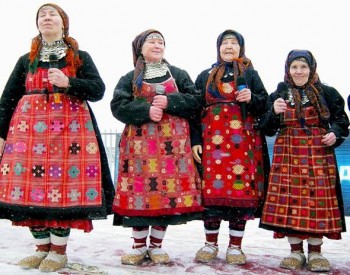
Buranovskiye Babushki: Udmurt originality. Photo: Wikipedia/Larisa Gorbunowa, 2011
We can’t be the only ones to have a secret fondness for the Eurovision Song Contest– however cheesy the offerings, however rigged or outright political the voting, however bored or drunken the presenters (or maybe that’s only in the UK). Camp, innocent, calculating, so ugly it’s beautiful (or vice versa). In fact, we suspect that’s why we like it so much.
In the 57th Contest, to be held in Azerbaijan in May, Russia is to be represented by the song ‘Party for everybody’ by a group of eight old ladies, the Buranovskiye Babushki, from the republic of Udmurtia, deep in the heartland of the Russian Federation, some 1400 kilometres from Moscow. More…
Fatherlands, mother tongues?
12 April 2013 | Letter from the Editors

Patron saint of translators: St Jerome (d. 420), translating the Bible into Latin. Pieter Coecke van Aelst, ca 1530. Walters Art Museum, Baltimore. Photo: Wikipedia
Finnish is spoken mostly in Finland, whereas English is spoken everywhere. A Finnish writer, however, doesn’t necessarily write in any of Finland’s three national languages (Finnish, Swedish and Sámi).
What is a Finnish book, then – and (something of particular interest to us here at the Books from Finland offices) is it the same thing as a book from Finland? Let’s take a look at a few examples of how languages – and fatherlands – fluctuate.
Hannu Rajaniemi has Finnish as his mother tongue, but has written two sci-fi novels in English, which were published in England. A Doctor in Physics specialising in string theory, Rajaniemi works at Edinburgh University and lives in Scotland. His books have been translated into Finnish; the second one, The Fractal Prince / Fraktaaliruhtinas (2012) was in March 2013 on fifth place on the list of the best-selling books in Finland. (Here, a sample from his first book, The Quantum Thief, 2011, Gollancz.)
Emmi Itäranta, a Finn who lives in Canterbury, England, published her first novel, Teemestarin tarina (‘The tea master’s book’, Teos, 2012), in Finland. She rewrote it in English and it will be published as Memory of Water in England, the United States and Australia (HarperCollins Voyager) in 2014. Translations into six other languages will follow. More…
Vesa Heikkinen & Harri Mantila: Kielemme kohtalo [The fate of Finnish]
14 October 2011 | Mini reviews, Reviews
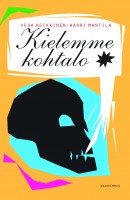 Kielemme kohtalo
Kielemme kohtalo
[The fate of Finnish]
Helsinki: Gaudeamus, 2011. 235 p.
ISBN 978-952-495-188-3
€ 32, paperback
This book sets out to examine the reasons behind concerns about the decay of the Finnish language. The authors maintain that linguistic immutability is too often taken to be a synonym for ‘good’ language, even though a living national language is capable of picking up new influences all the time without being in danger of destruction. The factor which the authors consider to be the greatest threat to Finnish is not youth slang, global English, or immigration but Finglish, the practice of using a mixture of Finnish and English, which has become widespread in research, commerce and government. The names of companies and public bodies are changed into opaque English-language abbreviations. Linguists are also concerned by the bureaucratisation of language that is often linked with public-sector reforms. Increasing linguistic inequality is the most serious threat described in this book: in the worst-case scenario, children’s and young people’s poor skills in Finnish could increase the gaps between classes in society and give rise to a growing mass of the excluded alongside an elite who are well-versed in the nuances of the language.
Translated by Ruth Urbom
Word-flames
1 March 2012 | Fiction, poetry
Harri Nordell breaks up grammar, invents words and leaves sentences unfinished. His poems are like minimalist, language-shattering sculptures of words. In her introduction Tarja Roinila compares Nordell’s poems to windows on to another world
Poems from Sanaliekki äänettömyydessä. Valitut runot 1980–2006 (‘Word-flame in silence. Selected poems 1980–2006’, WSOY, 2011)
You are beautiful
light-cupola-ecstasy of the eye
I look at you
from I-silence
daughter, bringer of the Word
involvement has been inscribed
with the name’s black reed
Girl, salt-grain of light
the mighty river of blood rinses memory,
otherness has come through us
![]()
Pentti Sammallahti & Finn Thrane
Here, now
1 October 2012 | Extracts, Non-fiction

Beijing, China, 1989. Photo: Pentti Sammallahti
Photographer Pentti Sammallahti (born 1950) has travelled widely over six decades; his mostly black-and-white photographs portray humans, animals, cities as well as open landscapes, in Nepal, France, Kalmykia, the US, Morocco, Russia – in more than 40 countries. His beautifully executed retrospective work, entitled ‘here far away’, containing more than 250 photographs, is introduced by Finn Thrane
Here far away is a retrospective work that comprises nearly fifty years of photographic activity and unfolds in almost as many countries. Despite this, Pentti Sammallahti’s discreet title points to the paradox that the photograph always represents a here-and-now: an encounter in the exhibition or on the page of the book between artist and viewer, which is of course subject to the law of mutability, but constantly reflects the capacity of the two to enter into a dialogue, to extend the picture’s mirror of the past into the viewer’s present and future. More…
Art online
23 May 2013 | In the news

Helene Schjerfbeck’s The convalescent (1888) on the cover of the guidebook of the Ateneum Art Museum
Attention lovers of Finnish art: the Ateneum Art Museum in Helsinki has joined the international Google Art Project (begun in 2011), with 260 participating art institutes and more than 40,000 works of art as high-resolution images.
The website also includes information on the paintings. Among the 55 images from Ateneum on show now are many of the great works of the golden period of Finnish art (1880–1910), including Hugo Simberg’s darkly cute The Garden of Death, Albert Edelfelt’s heartbreakingly beautiful Conveying a Child’s Coffin, Akseli Gallen-Kallela’s classic portrayal of grief, Lemminkäinen’s mother, and – a personal favourite here at the Books from Finland office – Magnus von Wright’s evocative Annankatu Street on a Cold Winter’s Morning.
The Ateneum has few foreign works of art; in the Google Art collection now there are one Rodin, a Modigliani, a van Gogh and two Gauguins.
Johanna Sinisalo: Enkelten verta [Angels’ blood]
2 February 2012 | Mini reviews, Reviews
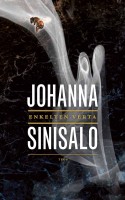 Enkelten verta
Enkelten verta
[Angels’ blood]
Helsinki: Teos, 2011. 274 p.
ISBN 978-951-851-414-8
€ 32, hardback
The literary career of Johanna Sinisalo (born 1958) has embraced fiction, drama, sci-fi and children’s books. Her 2000 Finlandia Fiction Prize-winning fantasy novel Ennen päivänlaskua ei voi and the novel Linnunaivot (2008) have been published in English as Not before Sundown and Birdbrain respectively. In this new novel, set in the near future, the central role is played by bees: widespread beehive failures in the United States and the resulting drop in pollination have resulted in an enormous food shortage that threatens the world economy. Orvo is a loner, the father of Eero, his grown-up son. Sinisalo cleverly works in animal rights activist Eero’s controversial blog comments on animal rights and modern man’s flawed relation to nature. However, this is also the novel’s biggest problem, as the blogging starts to weaken the story, of three generations of men in a family. Both the mythic, parallel reality of the bees and the tough-and-tender relationship between father and son are strong indications of Sinisalo’s narrative skill.
Translated by David McDuff
Jani Kaaro: Evoluutio [Evolution]
18 January 2012 | Mini reviews, Reviews
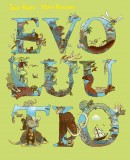 Evoluutio
Evoluutio
[Evoluutio]
Kuvitus [Ill. by]: Väinö Heinonen
Helsinki: BTJ Finland Oy/ Avain, 2011. 64 p., ill.
ISBN 978-951-692-766-7
€ 19.90, hardback
This non-fiction book, intended for 8- to 14-year-olds, takes as its main character Charles Darwin, who as a child begins to ponder where people came from. Various myths about the origins of the world, achievements of European natural historians and problems of early evolutionary theorists are explored briefly but elucidatingly; they are linked to the acquisition of new knowledge as the church fathers continue to trust in the Bible. The prehistory of the Earth, evolution and natural selection, animal populations, man and his ancestors are explained with the aid of plentiful and humorous illustrations. Scientific results are interestingly presented, but a separate fact box, for example, on the structure of the cell or the nature of DNA might have been useful. In the last picture, the 200,000-year-old Homo sapiens is seen scrawling his cave paintings: ‘so long as we are genetically unique individuals, our evolution will never cease’.
Translated by Hildi Hawkins
Asko Sahlberg: Häväistyt [Disgraced]
2 February 2012 | Mini reviews, Reviews
 Häväistyt
Häväistyt
[Disgraced]
Helsinki: WSOY, 2011. 331 p.
ISBN 978-951-0-38275-2
€ 33, hardback
The tenth novel by Asko Sahlberg (born 1964) is reminiscent of the earlier works of this distinctive author: its principal characters are hardened by experience and lead their lives somewhere in the Finnish countryside during a recent period of the country’s history. The sentences are beautifully constructed, and the pace of the narrative is very slow – sometimes even too slow. The main role is played by a middle-aged man who is running away with a woman and a small boy. What they are running away from for a long time remains a puzzle, as does the question of who they are looking for, a man called The Master. In the flashbacks of the last part of the book all is explained, and the rhythm of the story quickens. Considering the book’s desolate, even fatalistic view of the world, it is slightly surprising that everything eventually turns out as happily as in a fairytale. But perhaps this is Sahlberg’s tribute to his characters, and to all of us human beings, for whom he seems to care a great deal? His novel He (2010) will be published in February in England under the title The Brothers (Peirene Press).
Translated by David McDuff
Life is
16 February 2012 | Letter from the Editors
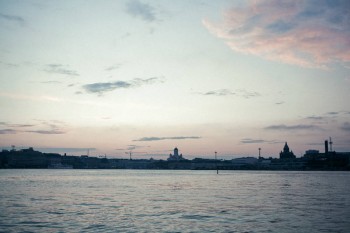
Helsinki silhouette. Photo: Valtteri Hirvonen, Eriksson&Company / World Design Capital Helsinki, 2011
Where is Books from Finland located?
In the old days, the answer was simple, although not unambiguous. Books came from its office in central Helsinki; it was written in various locations in Finland and abroad, and translated mainly in England and the United States; and it was published in the small town of Vammala, about 200 kilometres north of Helsinki.
It spread, in multiple paper copies, to readers throughout the world, to find its place on desks, on bedside tables, in briefcases and handbags, propping up table-legs or holding doors open – in London, England, Connecticut, New England, with a few in Paris, France, and Paris, Texas, maybe. More…
New from the archives
19 February 2015 | This 'n' that
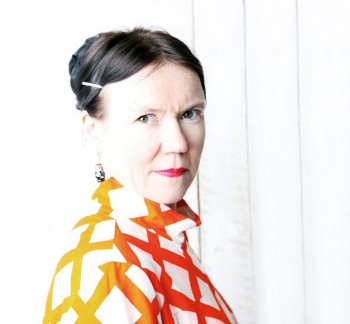
Rosa Liksom. Kuva: Pekka Mustonen
When the pseudonymous Rosa Liksom (born 1958; real name Anni Ylävaara) burst on the Finnish literary scene in 1985 with her first book, Yhden yön pysäkki (‘One night stand’), excitement was intense. For a start, she managed to keep her real identity secret, even when she appeared at public events and book-signings; then, she wrote generally in her native northern Finnish dialect, which hadn’t previously been heard very much in literary circles. Her very short short prose charted landscapes also not much represented in literature – the far north, the uneducated, the dispossessed.
This group of seven stories, from her second book, Tyhjän tien paratiisit (‘Paradises of the open road’, 1989), cover territory which has become familiar in her work: a woman who marries a layabout, a bellicose butcher’s son, a cleanliness fanatic for whom hygiene is more important than human relationships….
Rosa Liksom won the Finlandia Prize in 2011 for Hytti nro 6, which was published by Serpent’s Tail, London, in a translation by Lola Rogers last year.
*
The digitisation of Books from Finland continues apace, with a total of 360 articles and book extracts made available online so far. Each week, we bring a newly digitised text to your attention.

